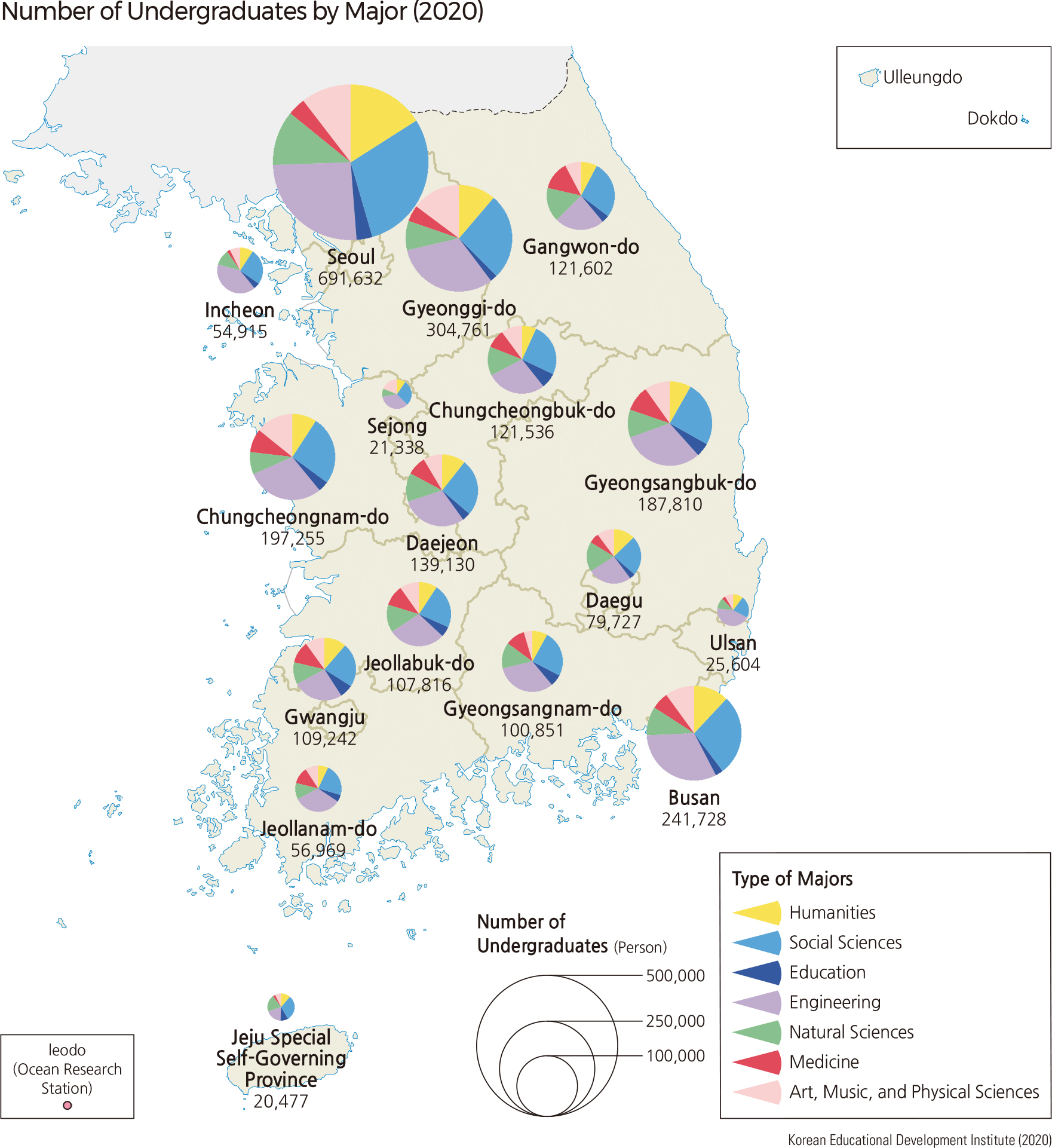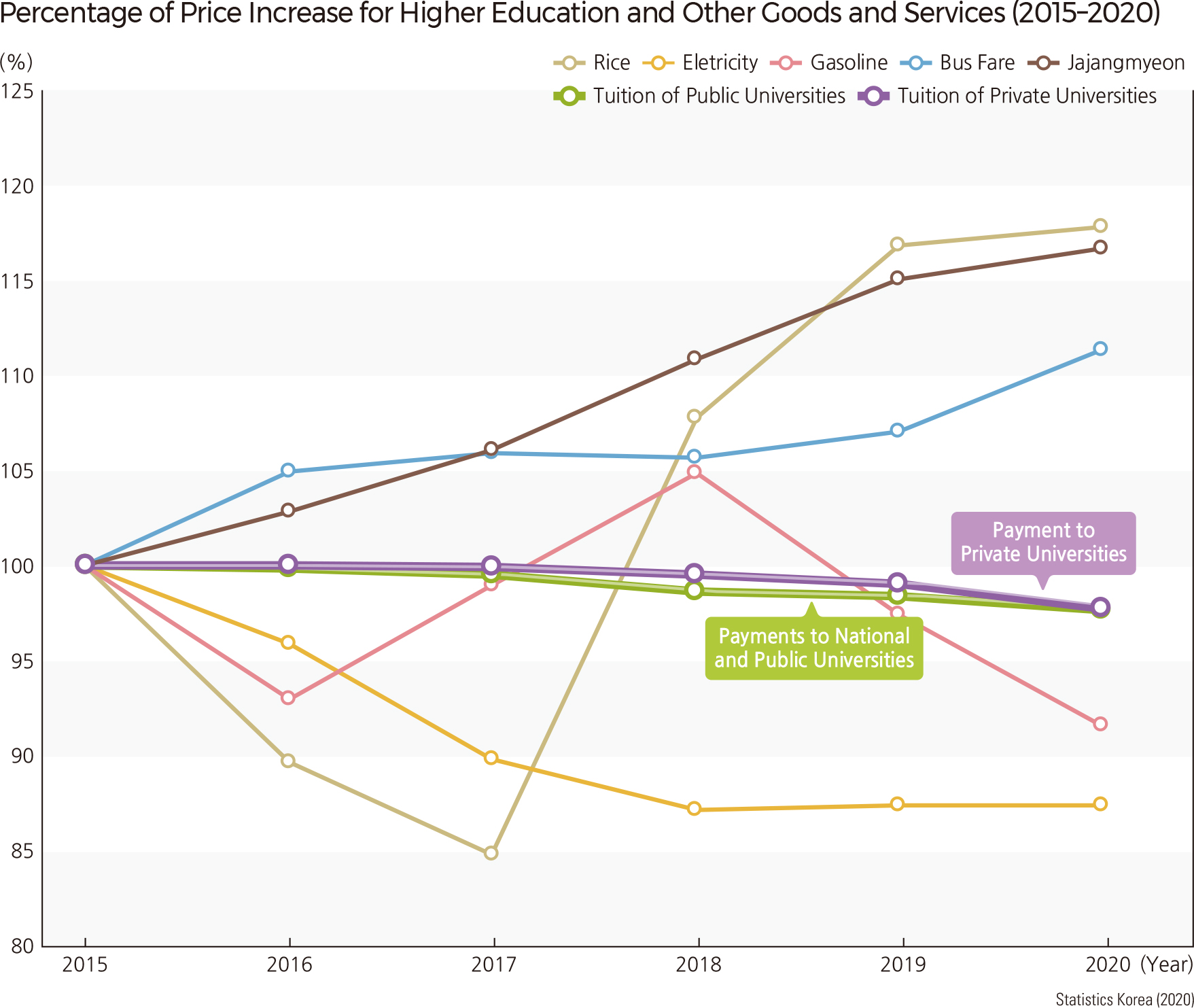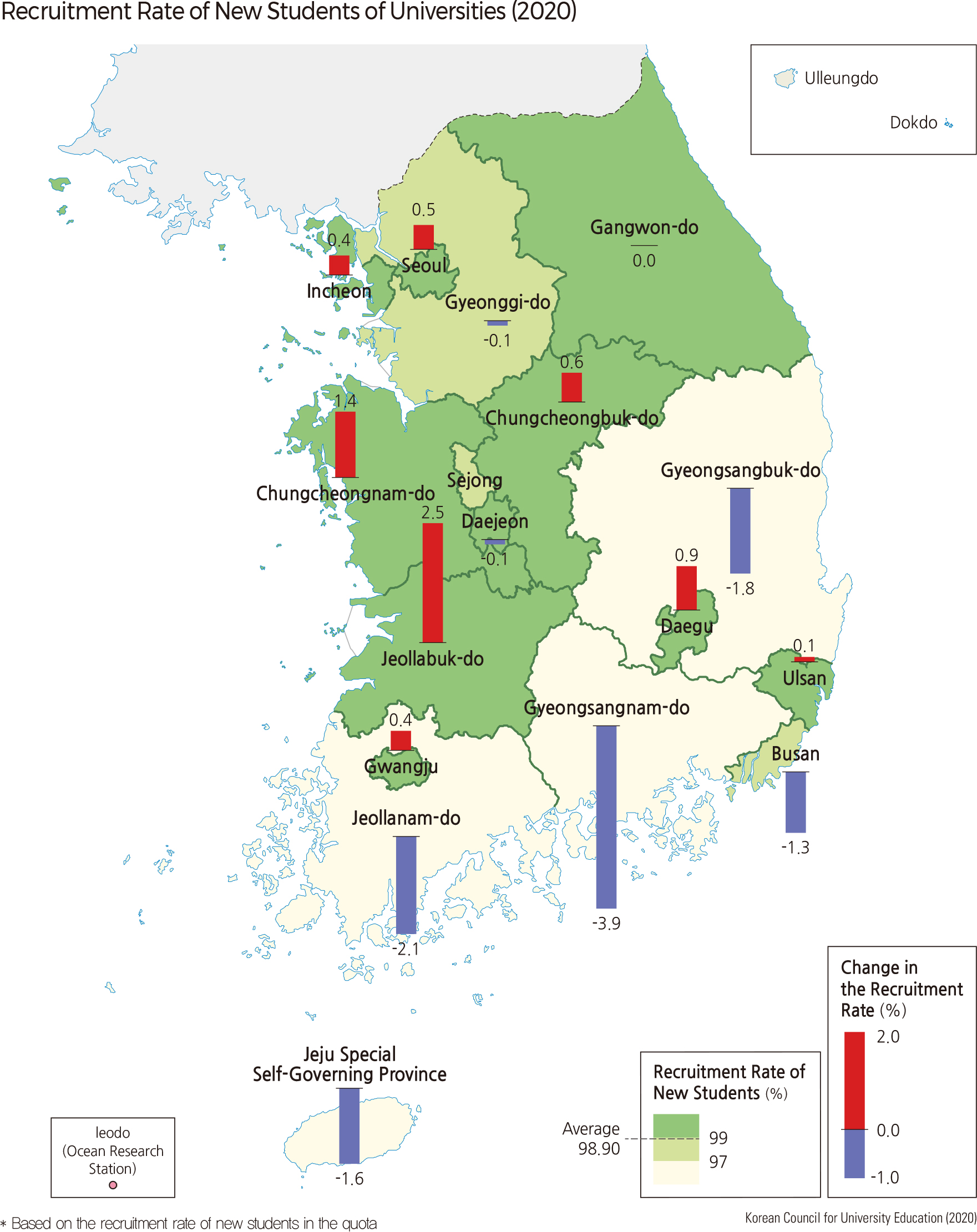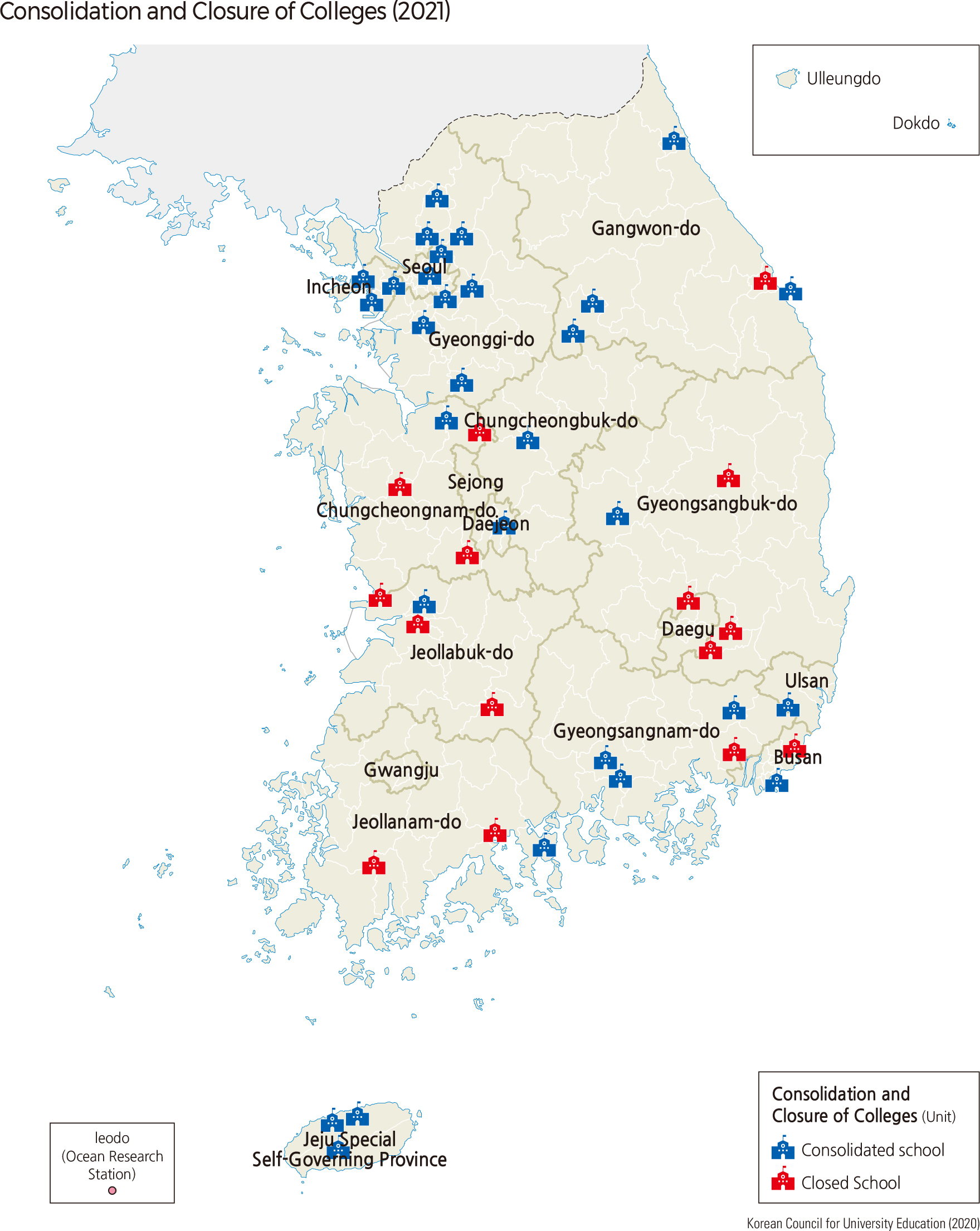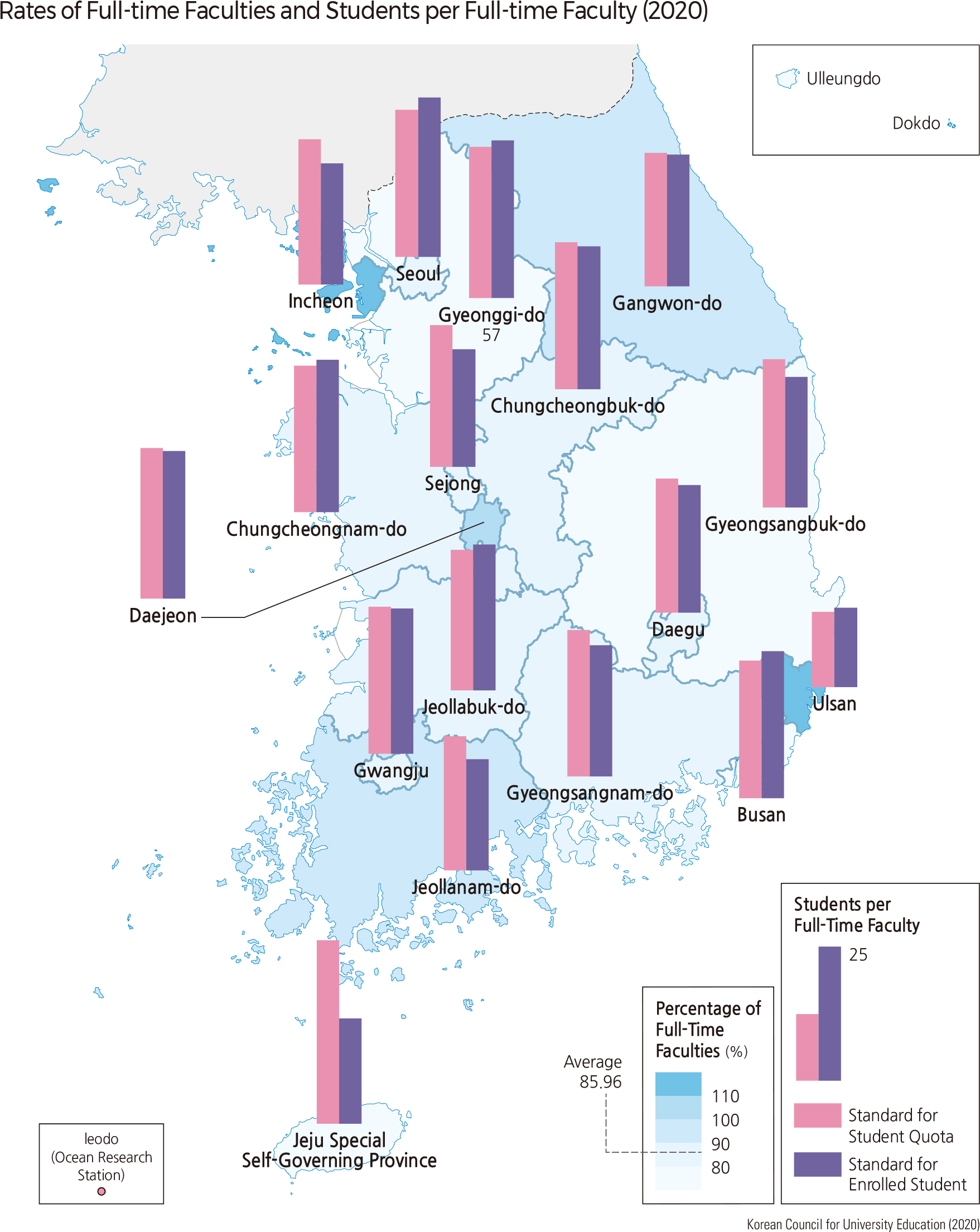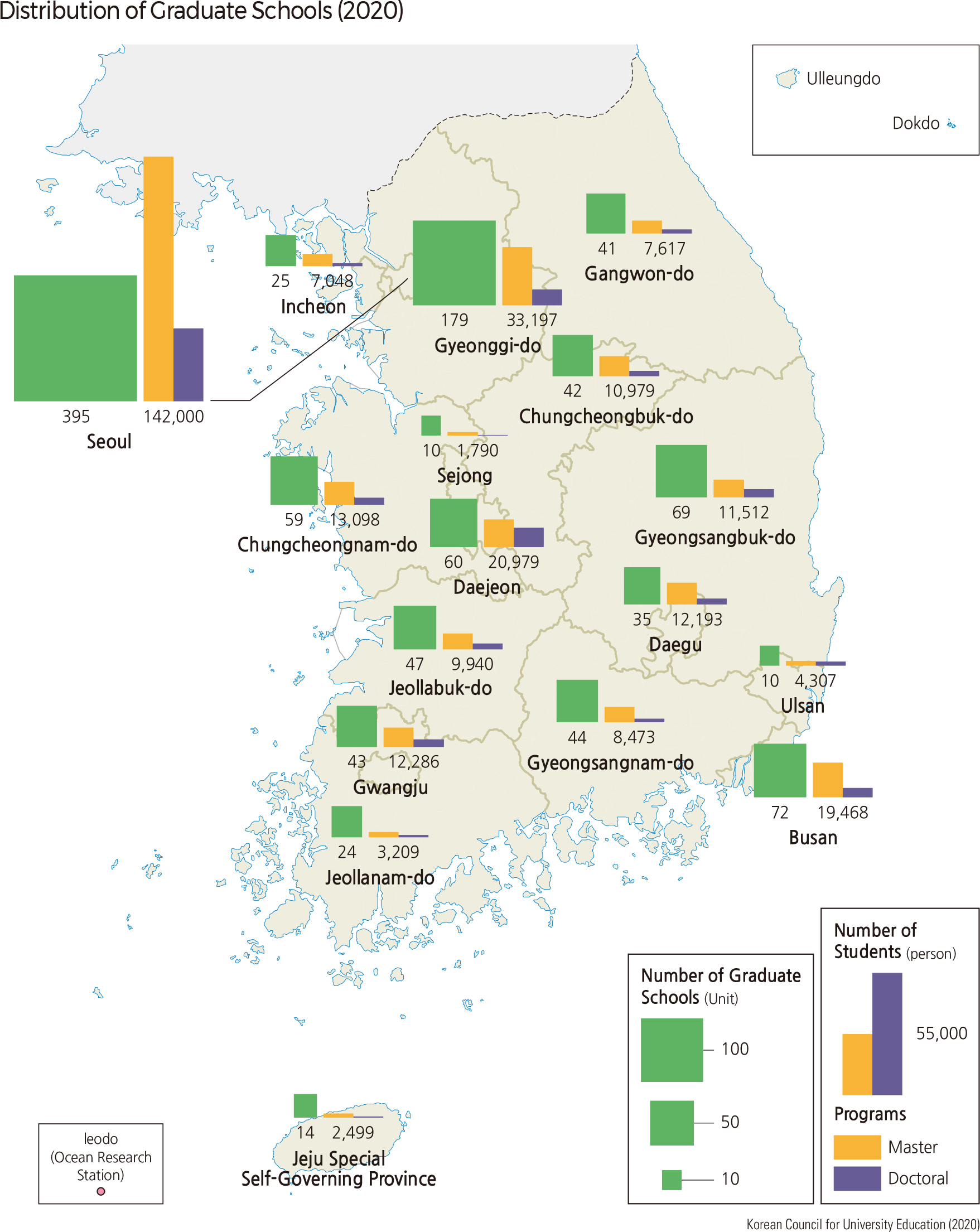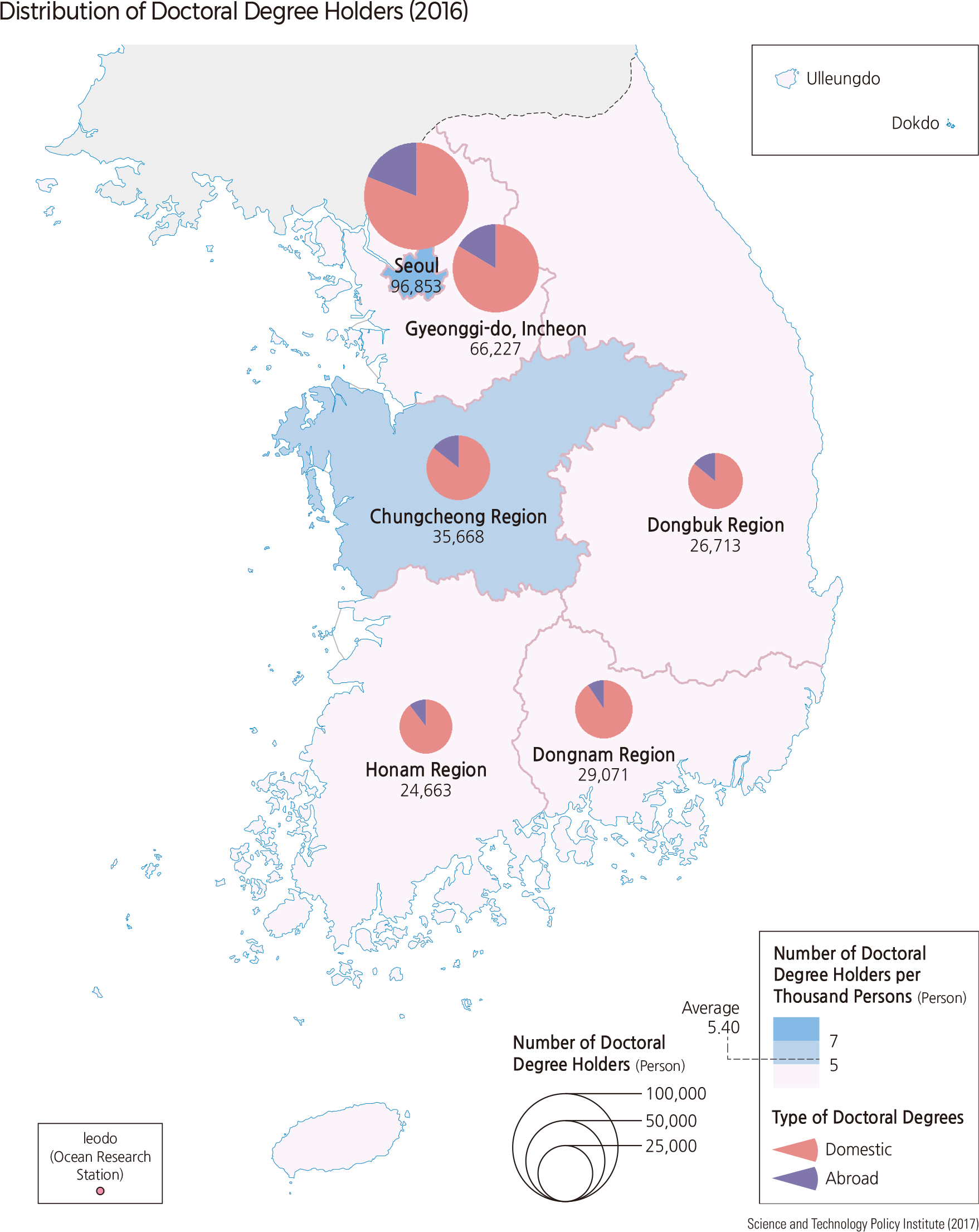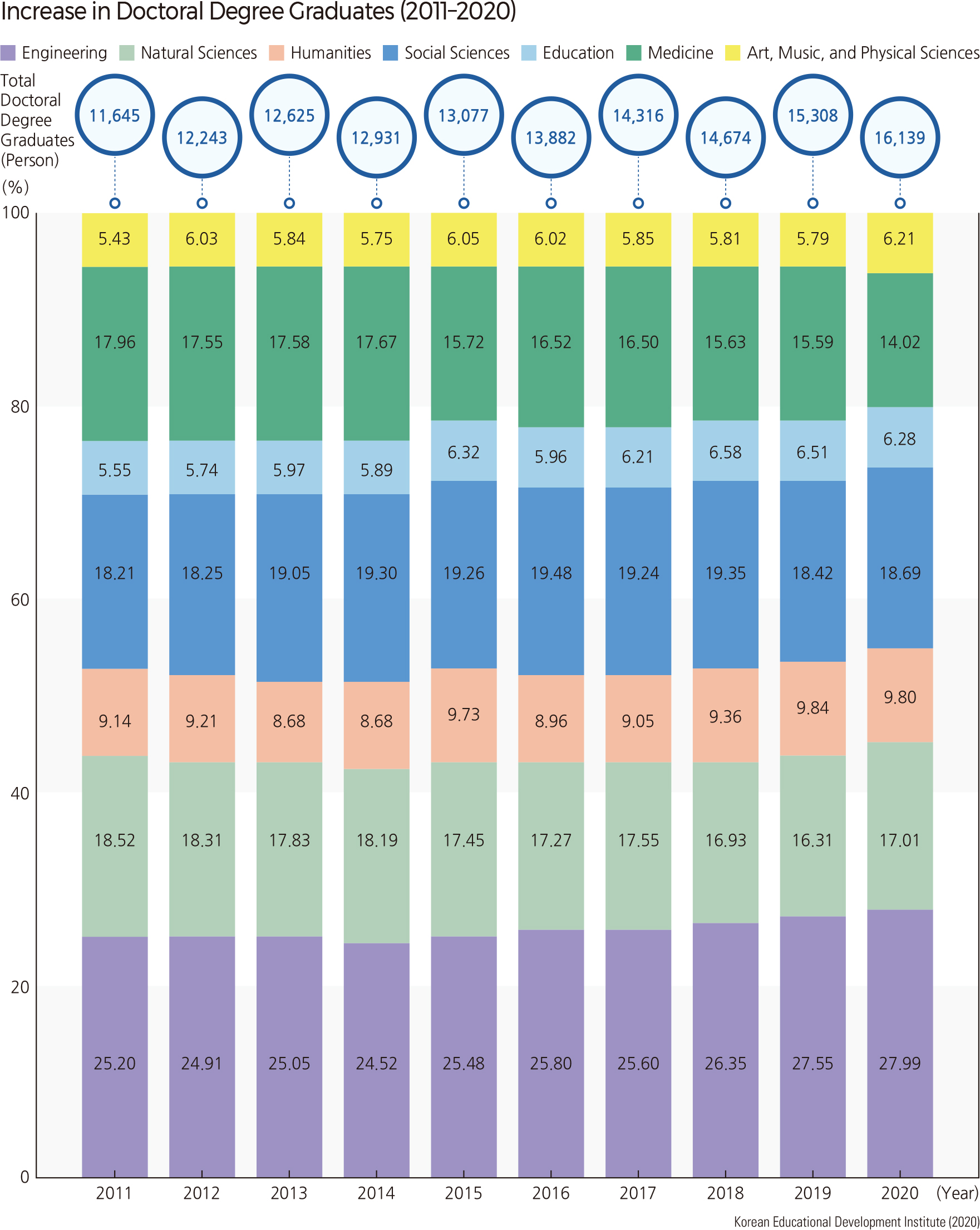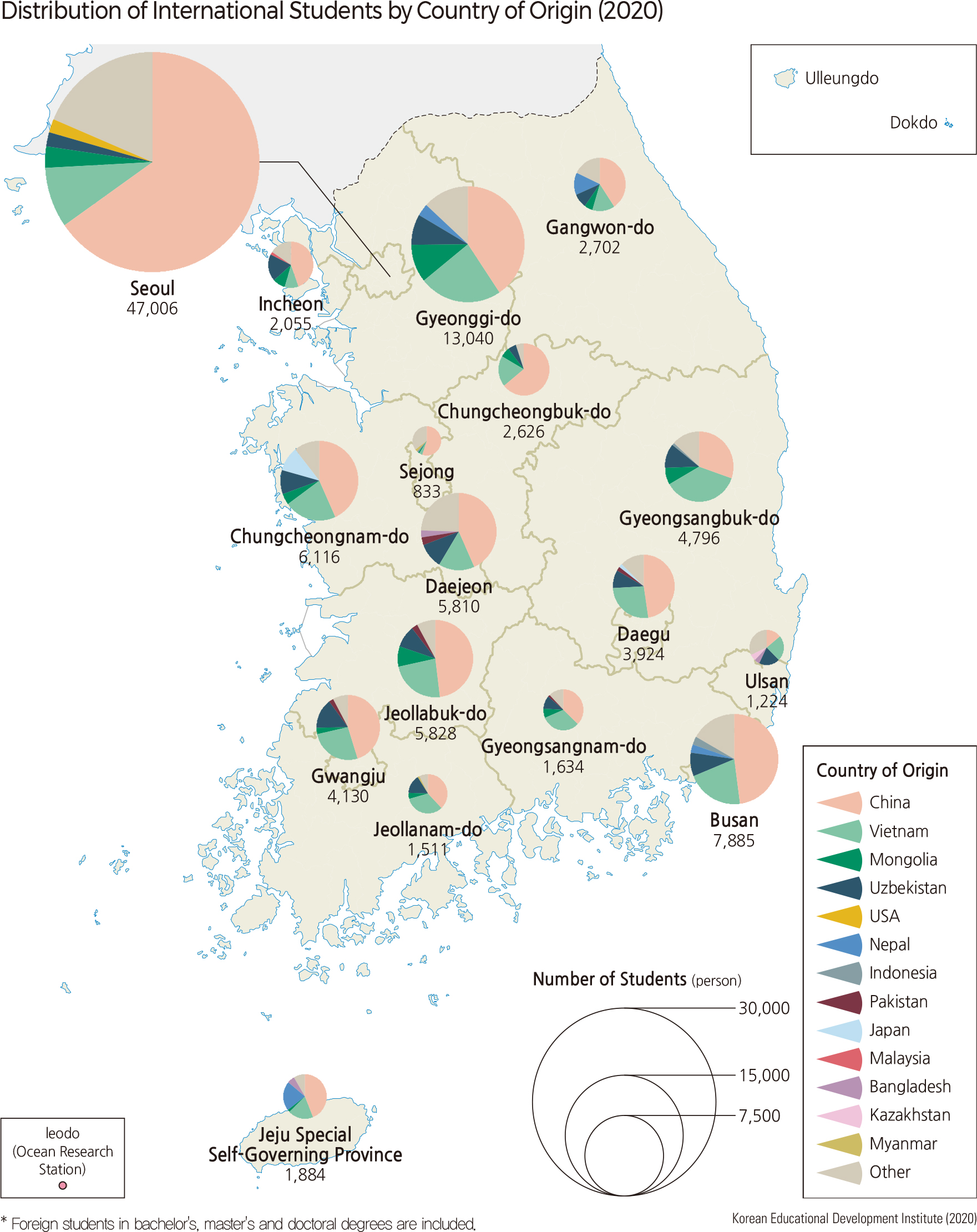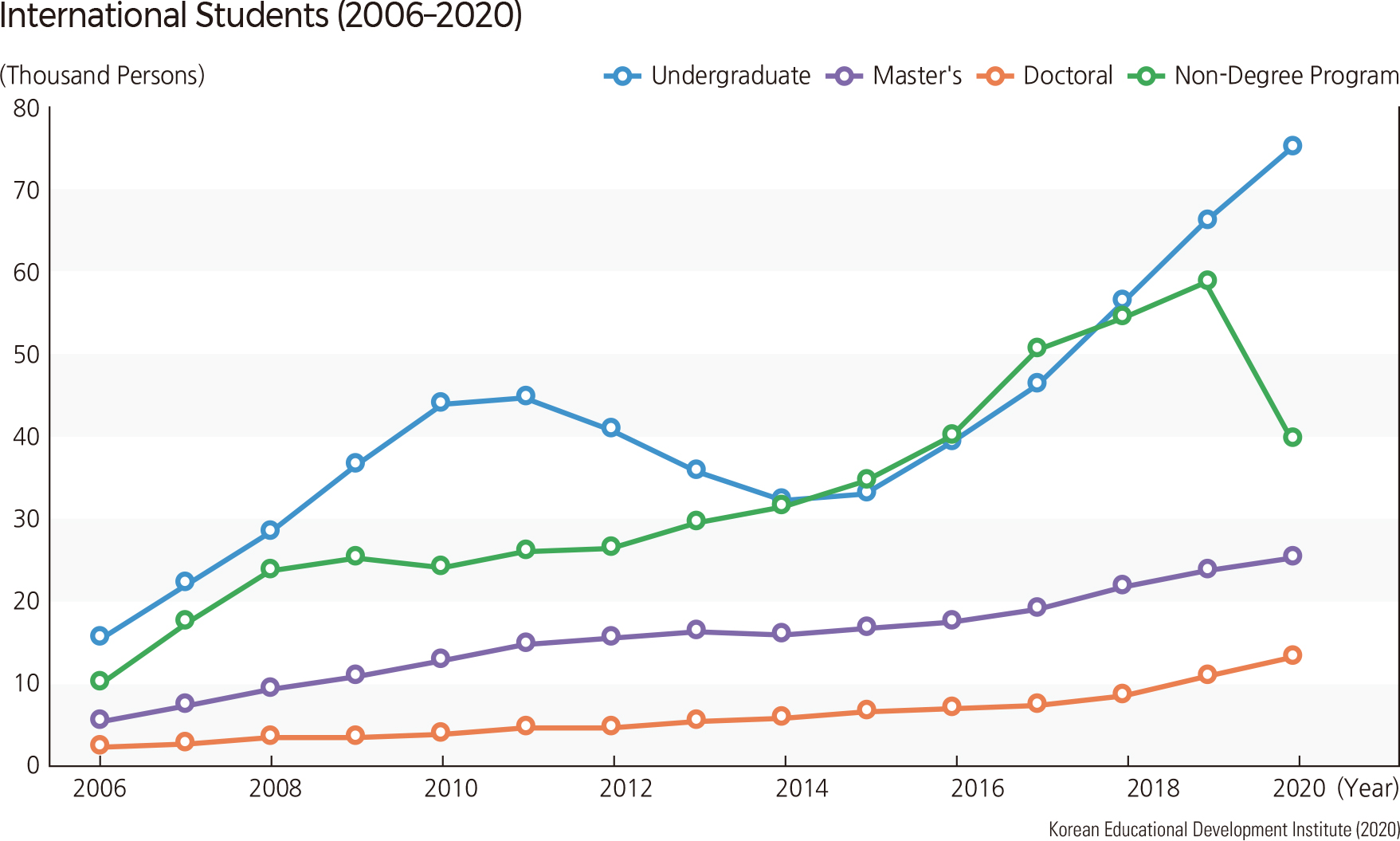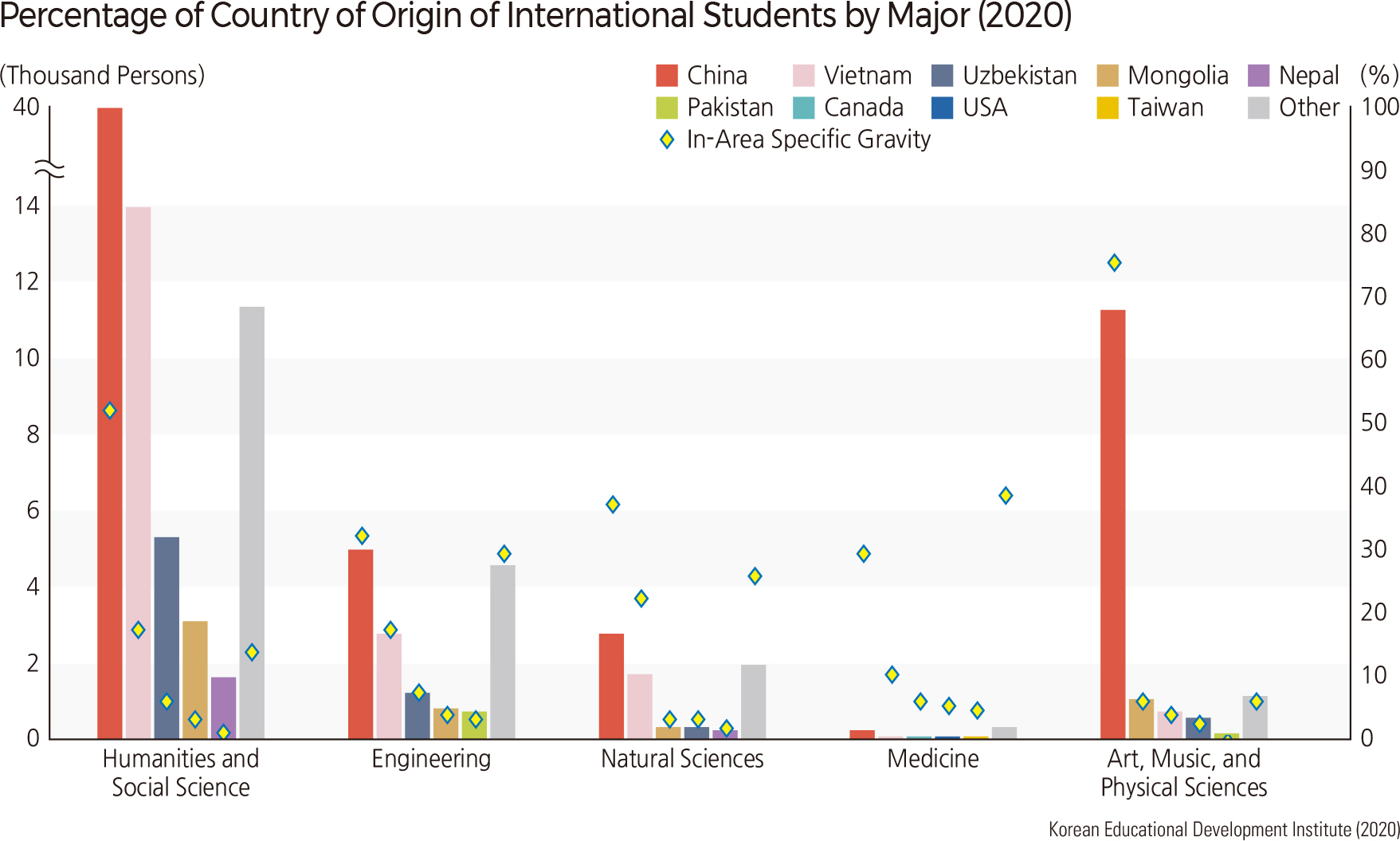English III 2021
Korea’s higher education has undergone significant changes. The number of colleges and college enrollment has increased rapidly, and a variety of colleges have been established. There are many types of colleges: four-year universities and two-year colleges, teacher education colleges for training elementary school teachers, and universities, which offer education through remote access. In addition, there are many other colleges such as military academies and academies that offer training for different professions. Universities are classified as national and private universities; a few national universities were established in the central city of each province. Private universities have been established on the basis of their unique educational goals. Since the 1990s, as the number of private universities has significantly increased, the percentage of students entering universities has also grown dramatically. As a result, the current percentage of students entering university in Korea is the highest among the OECD countries. The positive aspect of this phenomenon is the achievement of a highly educated workforce, but this also results in a significant economic burden for the students. Online and extension colleges, established for realizing lifelong education through ICT, have fewer spatial and temporal constraints than general universities because most lectures and evaluations are conducted online. However, in common with other types of colleges, these colleges are largely located in the Seoul Metropolitan Area and other metropolitan cities. The appropriate level of college tuition, the state’s scholarship support, and the maintenance of fiscal sustainability of both public and private universities have become important agendas. Majors in universities are mostly classified under humanities, social sciences, education, natural sciences, engineering, medicine, arts, music, and physical sciences. A decrease in the school-age population leads to a decrease in the number of college students. As a result, the consolidation of colleges began in the mid-2000s. Colleges continuously have reduced the number of new students in the quota to maintain the recruitment rate. However, the recruitment rate of new students in all higher education institutions is steadily decreasing. This trend is noticeable in the case of two-year colleges versus four-year universities. Most consolidations occur between junior college and university or between two or more universities. Recently, the consolidation is also taking place between national universities in provinces. The percentage of full-time faculty and the number of students per full-time faculty are major indicators of the college’s learning environment and conditions. Accordingly, colleges make great efforts to secure full-time faculties, and the rate of full-time faculties increased to 86% in 2020. Many graduate schools have been established in accordance with increasing demands for the development of higher education and professional knowledge. Graduate schools operated by universities account for a large share; there are many graduate schools for religious training, executive development, medical expert training, and legal profession training. University professors mostly have doctoral degrees, and a large proportion of these degrees are obtained at domestic universities. The number of doctorate holders who got their degrees has been increasing every year. The proportions of engineering, natural science, social science, and medicine are relatively high by field. More than 70% of all doctorate holders are densely distributed in the Seoul Metropolitan Area and the Chungcheong region. The number of international students in undergraduate, master’s, and doctoral courses in all higher education institutions has been steadily increasing. Although the number of international students for bachelor’s degree courses temporarily decreased from 2011 to 2014, it increased sharply again after 2015, reaching 75,000 in 2020. Chinese and Vietnamese students are the most among all international students. However, the proportion of international students from other countries, such as Uzbekistan and Nepal, is relatively high in some areas. In addition, the proportion of international students’ countries of origin also varies by their major, especially in the medical field, Canada, the United States, and Taiwan are relatively high. |
